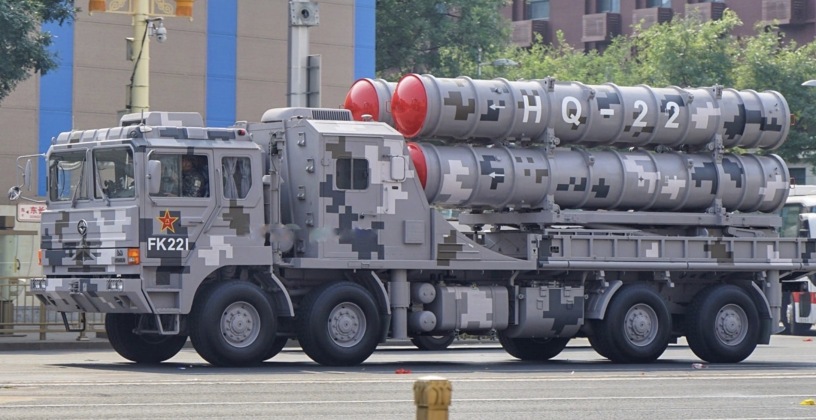New Chinese-Supplied HQ-22 Air Defence Systems on Display: Why Deterring NATO is Vital for Serbia
May-1st-2022

Missile Battery from HQ-22 System
On April 30 the Serbian Military’s new HQ-22 air defence systems were put on display for the first time after arriving in the country early in the month, with the weapons platform representing by far the most formidable asset now guarding the country’s airspace.
On April 30 the Serbian Military’s new HQ-22 air defence systems were put on display for the first time after arriving in the country early in the month, with the weapons platform representing by far the most formidable asset now guarding the country’s airspace.
Reports first emerged from April 9 that Chinese Y-20 heavy lift aircraft were transporting the missile systems to Serbia, which was confirmed in August 2020 to have placed orders despite prior expectations that it would acquire Russian air defence systems such as the S-400.
The medium range system has capabilities thought to exceed those of its Russian equivalents, and remains compatible with Serbia’s existing Soviet-supplied hardware such as S-125 air defence platforms and MiG-29 fighter jets although technologically it is several decades ahead.
While threatened with American economic sanctions should it acquire high end Russian weapons systems, Serbia was also ordered by the United States not to acquire the HQ-22 as part of broader efforts by Washington to push non-Western suppliers out of global arms markets.


Serbian Personnel and HQ-22 Battery
Serbian President Aleksandar Vucic stated regarding the new the Chinese missile systems that while they were not a threat to other countries, they provided “powerful deterrent” against potential attackers. “We will no longer allow to be a punching bag for anyone,” Vucic he said, in reference to a 78 day bombing campaign carried out by NATO in 1999 against Yugoslavia.
Serbian President Aleksandar Vucic stated regarding the new the Chinese missile systems that while they were not a threat to other countries, they provided “powerful deterrent” against potential attackers. “We will no longer allow to be a punching bag for anyone,” Vucic he said, in reference to a 78 day bombing campaign carried out by NATO in 1999 against Yugoslavia.
Historical memory of the bombings, which included use of highly toxic depleted uranium against civilian areas and strikes on media buildings and outdoor markets, is thought to have led Serbia to place a strong emphasis on air defence despite its limited defence budget. The country’s aerial warfare capabilities have also been bolstered by aid from Russia and Belarus which have both provided surplus MiG-29 fighters free of charge to supplement the small fleet Serbia retained after its war with NATO.
Mobile ground based air defence systems have been widely seen as an asymmetric tool for countering superior enemy air power, particularly due to their much lower operational costs than fleets of fighter or interceptor or aircraft.
Mobile ground based air defence systems have been widely seen as an asymmetric tool for countering superior enemy air power, particularly due to their much lower operational costs than fleets of fighter or interceptor or aircraft.
The fact that the prior NATO bombing campaign against Belgrade and other population centres was conducted without authorisation from the United Nations and without provocation has led it to widely be deemed illegal, which raised concerns not only in Serbia but also across other countries outside the Western sphere of influence that they could also come under attack which spurred interest across several countries in acquiring similar high performance mobile air defence systems.
https://en.wikipedia.org/wiki/Kosovo_War
ReplyDeleteSerbia did not carry out provocation in Kosovo ?
Hogwash !
Wakakakaka…
DeleteAGAIN, yr one true source of lies IS Wikipedia!
No wonder u can buy the fart of Iraq's WMD from yr idol via a tube of white washing powder.
Living under a fart filled well isn't a Hogwash for u, indeed.